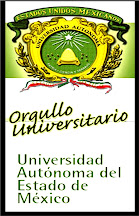 Architecture of the Feathered Serpent Pyramid : Facades
Architecture of the Feathered Serpent Pyramid : Facades Teotihuacan en línea. Saburo Sugiyama. The Feathered Serpent Pyramid was constructed around A.D.200, the last major monument to be built in the city. The new construction program began with the destruction of existing structures, with most areas leveled to the natural tepetate subsoil. The interment of sacrificial graves, the preparation of the pyramidal platform, the construction of the surmounting temple, and the installation of the sculpted facades comprised the major stages in the erection of this monument. One of the unique features of the pyramid was the large number of massive, sacred images depicted in high-relief in all four of its facades (Iconography of the Facades at the Feathered Serpent Pyramid). This type of pyramidal construction with stone blocks and curving heads can only be found at the Feathered Serpent Pyramid and the Adosada platform of the Sun Pyramid in Teotihuacan.The Feathered Serpent Pyramid was perhaps one of the first instances in which the 'talud-tablero' [an architectural design form that combines the shape of a rectangle (tablero) and a trapezoid (talud), was used in Teotihuacan construction. The pyramid was exactly square in plan view, with sides about 65 m long (plan of the structure before excavations in 1980s). It is currently 19.4 m high. Marquina (1951: 85) proposed that the original pyramid had six stepped platforms or stages, with a total of 366 sculpted heads. This reconstruction is certainly incorrect, since, in Marquina's reconstruction, both counts of the numbers of heads present and the distance between them are in error. In addition, the pyramid seems to have had seven stepped platforms, rather than six. Several possibilities for the numbers of head depictions can be proposed, based on limited empirical evidence. However, important questions remain unresolved, and a complete reconstruction of the pyramid is not yet possible.
 On the western (and best preserved) facade of the Feathered Serpent Pyramid , the heads of feathered serpents alternate regularly with another type of head. It is likely that the same pattern of alternation was repeated on the south side, as indicated by the discovery of several serpent heads in fill deposits to the south of the Feathered Serpent Pyramid, and by a headdress head found in its original location in the south facade. Sculptural data from fallen blocks on the north and east sides suggest that the same pattern was repeated on all sides of the pyramid. The reconstructed plan is thus based on field data assembled from the west, south, and north sides of the pyramid
On the western (and best preserved) facade of the Feathered Serpent Pyramid , the heads of feathered serpents alternate regularly with another type of head. It is likely that the same pattern of alternation was repeated on the south side, as indicated by the discovery of several serpent heads in fill deposits to the south of the Feathered Serpent Pyramid, and by a headdress head found in its original location in the south facade. Sculptural data from fallen blocks on the north and east sides suggest that the same pattern was repeated on all sides of the pyramid. The reconstructed plan is thus based on field data assembled from the west, south, and north sides of the pyramidSaburo Sugiyama: Arizona State University, Dept. of Anthropology. ©Copyright Project Temple of Quetzalcoatl, Instituto Nacional de Antropología e Historia, México























FANTASTIC!
ResponderEliminar